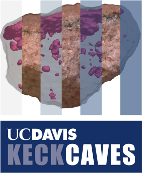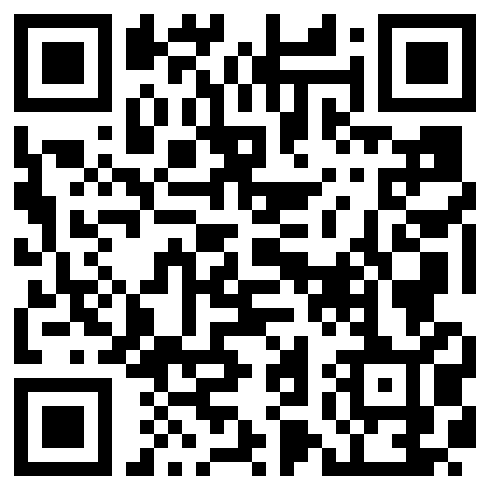Download
The Augmented Reality Sandbox is free software, distributed under the GNU General Public License. To build and install the software, refer to the included README file. The process is usually as simple as "make," but some minor changes might have to be made according to the target operating system. The tarballs contain README files with rudimentary build and use instructions; please read them.
The tarballs available for download below will expand into SARndbox-<release> directories in the current directory. All downloadable files are tagged with their SHA1 checksums to protect against corruption and tampering.
This software is based on the Vrui toolkit and the Kinect 3D video capture project, version numbers as indicated below.
- SARndbox-2.8 (130KB) (SHA1=01e0803f7cb61ec9e1b193d03558daa5e1234eb2) Requires Vrui-8.0-001 or newer and Kinect-3.10 or newer. Adapted to Vrui's new build system.
- SARndbox-2.7 (130KB) (SHA1=4fb72282bba8f3bd140c4dc968006c269c7da983) Requires Vrui-5.2-001 or newer and Kinect-3.9 or newer.
- SARndbox-2.6 (114KB) (SHA1=25efd7732292b5f33ae29bab3657183a5ffd45aa) Requires Vrui-4.6-005 or newer and Kinect-3.7 or newer.
- SARndbox-2.5 (114KB) (SHA1=258bd9964d8b3f4f637b6c6a84e06a6a6a4fb58c) Improvements in water management and control pipe command handling. Requires Vrui-4.5-001 or newer and Kinect-3.5 or newer.
- SARndbox-2.4 (112KB) (SHA1=78a7ffa87ad7bc5789b1f7e8253d8bab49901e5d) Experimental support for second-generation Microsoft Kinect-for-Xbox-One and Intel RealSense cameras. Requires Vrui-4.4-001 or newer and Kinect-3.4 or newer.
- SARndbox-2.3 (112KB) (SHA1=61eb45466b88411e6678291d84d27058597e3fc5) Fixed some minor scaling issues and improved defaults for elevation and rain elevation ranges.
- SARndbox-2.2 (111KB) (SHA1=2278ccc3d45180162e44a8fbe6a2e02de7826b33) Support for loading DEM files and saving the current surface as a DEM file. Requires Vrui-4.2-001 or newer and Kinect-3.2 or newer.
- SARndbox-1.6 (80KB) (SHA1=543bf7374ecc204bbb34c09d2ee9f77c0b4ff40a) Several new run-time control features. Requires Vrui-3.1-004 or newer and Kinect-2.8-002 or newer.
- SARndbox-1.5-001 (77KB) (SHA1=c2a76eaa74c46266415757215e0695b55aa84a52) New filter option to reduce remaining surface noise. Requires Vrui-3.1-002 or newer and Kinect-2.8 or newer.
- SARndbox-1.5 (75KB) (SHA1=17940e3fc9a548087718d5d312ede34416ebf6b9) Minor visual improvement in the projector calibration program. See README file. Requires Vrui-3.0-001 or newer and Kinect-2.7 or newer.
- SARndbox-1.4 (75KB) (SHA1=9bf41ca0da1949738e9b3d82e3a93f951f7cea0d) Requires Vrui-3.0-001 or newer and Kinect-2.7 or newer.
- SARndbox-1.2 (73KB) (SHA1=215308755e1db2590b17d4080752acce58a28c66) Requires Vrui-2.7-001 or newer and Kinect-2.5 or newer.
- SARndbox-1.1 (72KB) (SHA1=3c6b2ba1cdff2d00745ca4eff330b5263659f35a) Requires Vrui-2.4-001 to Vrui-2.6-002 and Kinect-2.1 to Kinect-2.4.
- SARndbox-1.0 (73KB) (SHA1=1e961f38469df75f4bfec9e6e4b9fe057ca8f561) Requires Vrui-2.4-001 or newer and Kinect-2.1 or newer.
Frequently Asked Question
- What are the restrictions on using the AR Sandbox software? Specifically, can it be used commercially?
The AR Sandbox software, and its underlying packages (Vrui and Kinect), are released under the free and open-source GNU General Public License (GPL), version 2. While the GPL is quite human-readable as far as software licenses go, it may still be a bit daunting to people who don't regularly deal with this sort of thing. So here's a handy-dandy breakdown:
If you just want to use the AR Sandbox software, i.e., you do not want to make any modifications to the software itself, then there are no restrictions whatsoever. You can set up an AR Sandbox in any environment you want, including commercial environments such as for-profit science centers, arcades, or amusement parks; you can charge visitors for access to your AR Sandbox; you can rent it out for events or parties; you can build complete AR Sandbox systems and sell them to others; you can even download the software for free from here, and then immediately turn around and sell it to others unchanged (I kid you not). You do not even need to ask anyone for permission before doing any of these things.
If, on the other hand, you do want to make changes or additions to the software, and then give your changed or extended version to other people (that includes uploading to public repositories such as github), you must give it to those people under the GNU General Public License, version 2 or later, with all that entails (at that point I strongly recommend reading the actual license text). Most importantly, this means that you have to give those other people the complete source code of the changed/extended software (that's what "open-source software" means). Note, however, that there is no requirement to release any changes or additions you make to anyone. The license restriction only applies if you want to re-distribute the changed/extended software.
To boil it down even further: You are free to do whatever you want with the software, except re-distribute it, or changed/extended versions of it, to other parties under any license other than the GNU General Public License, version 2 or later.
Support
There are now step-by-step installation instructions, starting from a blank PC, on this web site, including a video.
To interact with other AR Sandbox users, or ask questions or provide feedback to the developers, please head to the official AR Sandbox support forum on the Doc-Ok.org web site.
Donating to the Project
While the AR Sandbox was originally developed as part of a federally-funded research project (NSF grant DRL 1114663), that project concluded many years ago. These days, maintenance and further development of the AR Sandbox software, and online support through direct emails or the AR Sandbox support forum, are unfunded efforts undertaken by the original AR Sandbox developers on a volunteer basis and in their own free time.
If you built an AR Sandbox for yourself or for your institution, please consider making a donation to the project. Even small amounts, say USD 20, will allow us to continue keeping the software up-to-date, buy new hardware such as 3D cameras to evaluate them for AR Sandbox use, write drivers for new hardware that proves worthwhile, and keep up online support.
Donations can be made securely through UC Davis's giving portal, where the UC Davis W.M. Keck Center for Active Visualization in the Earth Sciences (KeckCAVES), under whose umbrella the AR Sandbox was developed, has a gift account. A one-time tax-deductible donation is only one click and a short form away at this location: UC Davis Giving - KeckCAVES Fund. UC Davis accepts all major credit cards.
Acknowledgment
We politely ask that you display a small plaque on or near any publicly visible AR Sandbox that you construct, to give credit for development of the original algorithms and code, and acknowledge the federal research grant that funded its development. Here is a template paragraph:
If you want to use the KeckCAVES logo, we have two versions (portrait and landscape) available for download in high resolution:
We also have a printable QR code that takes viewers directly to the Augmented Reality Sandbox project page:


